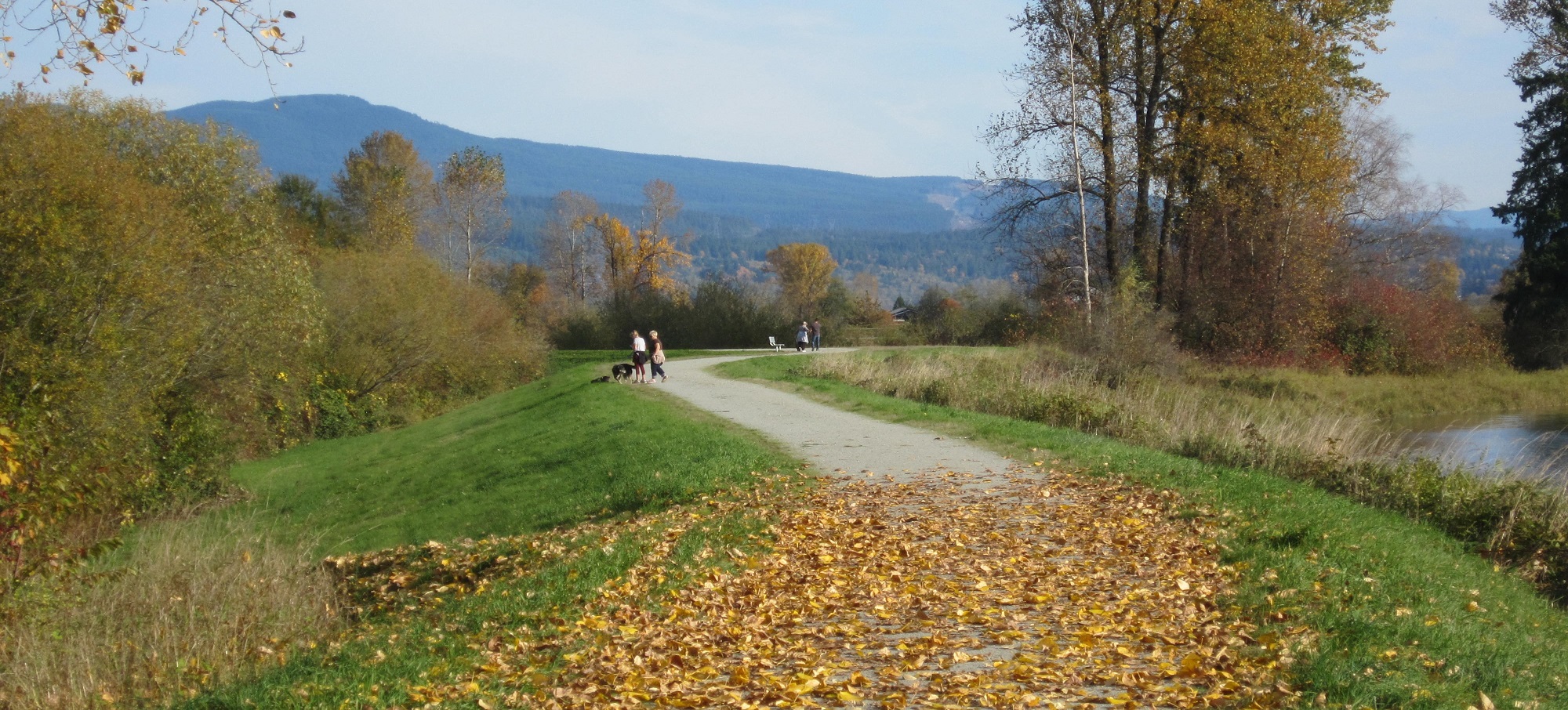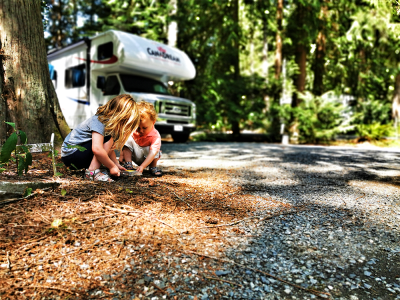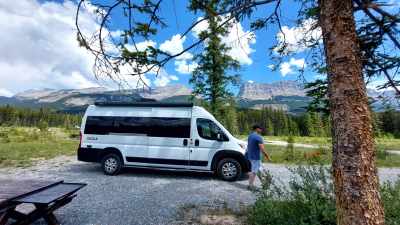Walking the Dyke, Pitt Meadows
Maple Ridge & Pitt Meadows
Predominantly a farming area on the western edge of the Fraser Valley in Metro Vancouver and nestled at the feet of the Coast Mountains, the communities of Maple Ridge and Pitt Meadows, often called Ridge Meadows, offer an abundance of outdoor opportunities. The area is fortunate to have Golden Ears Provincial Park, one of the largest provincial parks in British Columbia, and the mighty Fraser River, right on its doorstep, that provide adventure and fun for all ages. Other parks, lakes and rivers also entice locals and visitors to these communities. Horse riding, biking and hiking are popular with hundreds of kilometres of trails to choose from. Canoeing, water skiing, fishing, swimming and more can be found right in the Ridge Meadows area. Stunning championship golf courses, artisans, farm markets, and even sky diving are all here for the outdoor adventurer.

Bike Trails in Maple Ridge Photo Province of BC
Location
Maple Ridge and Pitt Meadows are located east of Vancouver in the Vancouver, Coast & Mountains region of BC. There are 3 major routes from Vancouver: Trans Canada Hwy 1; Hwy 7; and if coming from Vancouver International Airport, Hwy 17 and the Golden Ears Bridge. They are approximately 40 km (25 mi) from Vancouver. To access the communities from the east use Hwy 1 then take the Golden Ears Bridge north; or Hwy 7.
A Step Back in Time
Indigenous peoples inhabited the Maple Ridge and Pitt Meadows area over 1,000 years ago. They were known collectively as “Halkomelem” and lived predominantly off the land by farming and hunting and fishing in the Fraser River. Today, the Katzie Nation still reside here.
The first European to arrive was a British explorer, Captain James McMillan of the Hudson Bay Company, in 1824. He named the Pitt River, an arm of the Fraser River, and local lore suggests the name was inspired by British prime minister William Pitt the Younger. Settlers gradually arrived and by the mid-1870s some 50 or so families lived in the area. Logging and farming were the prime industries.
In 1858, Samuel Robertson, a carpenter who worked for the Hudson Bay Company arrived and stayed in what was called Albion, which is now a community of Maple Ridge. He planted fruit trees and it was the first orchard not owned by the Hudson Bay. In 1859 John MacIvor, a pioneer, established a dairy farm further west and named the region Maple Ridge after the maples growing in the area.
The Fraser River was the main transportation corridor and flat-bottomed sternwheelers plied the waters delivering produce and goods until the Canadian Pacific Railway arrived in 1895.
Maple Ridge was first incorporated in 1874 and included Pitt Meadows. Residents of Pitt Meadows lobbied to be removed from Maple Ridge in 1892 and it reverted to an unorganized territory. It was subsequently incorporated in 1914. After 1910 French Canadians and Japanese arrived and a group of Dutch farmers reclaimed some of the low-lying land in Pitt Meadows after World War II.
The Maple Ridge Museum is home to many artifacts from the early days and is housed in Haney House, named after Thomas Haney, an early settler who was Manager of the Port Haney Brick & Tile Company. The Pitt Meadows Museum is located in the old General Store and houses a remarkable collection of pioneer and agricultural artifacts. The building was Pitt Meadows’ first post office and one of the town’s earliest stores.
Maple Ridge & Pitt Meadows and Nearby Accommodations
British Columbia Lodging and Campgrounds Association Members
List
Map





